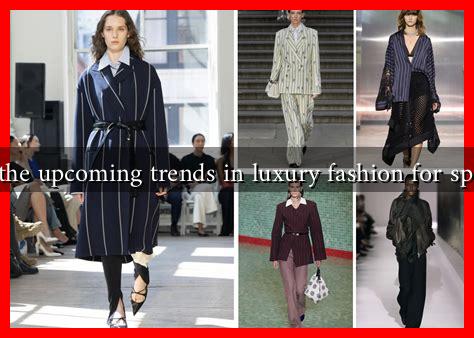-
Table of Contents
Upcoming Trends in Luxury Fashion for Spring 2025
As the fashion industry evolves, luxury brands are continuously adapting to meet the changing preferences of consumers. Spring 2025 is poised to showcase a blend of innovation, sustainability, and nostalgia, reflecting the current cultural zeitgeist. This article explores the anticipated trends in luxury fashion for the upcoming season, providing insights into what consumers can expect from their favorite high-end brands.
1. Sustainability Takes Center Stage
In recent years, sustainability has transitioned from a buzzword to a fundamental principle in luxury fashion. As consumers become more environmentally conscious, brands are responding by integrating sustainable practices into their operations. For Spring 2025, we can expect:
- Eco-friendly Materials: Luxury brands will increasingly use organic cotton, recycled polyester, and innovative materials like mushroom leather and bio-fabricated textiles.
- Transparent Supply Chains: Brands will provide consumers with detailed information about their sourcing and production processes, fostering trust and accountability.
- Upcycling and Circular Fashion: More designers will embrace upcycling, creating new pieces from discarded materials, thus promoting a circular economy.
For instance, brands like Stella McCartney and Gucci have already set the bar high with their sustainable collections, and we can expect more luxury labels to follow suit.
2. The Rise of Digital Fashion
As technology continues to reshape the fashion landscape, digital fashion is becoming a significant trend. The integration of augmented reality (AR) and virtual reality (VR) into the shopping experience is set to revolutionize how consumers interact with luxury brands. Key aspects to watch for include:
- Virtual Fashion Shows: Brands will host immersive digital fashion shows, allowing global audiences to experience collections in real-time.
- Digital Wearables: The rise of NFTs (non-fungible tokens) will lead to the creation of exclusive digital garments that consumers can wear in virtual environments.
- Enhanced Online Shopping Experiences: AR technology will enable customers to visualize how clothing fits and looks on them before making a purchase.
Luxury brands like Balenciaga and Dolce & Gabbana have already ventured into the digital realm, setting a precedent for others to follow.
3. Nostalgia and Retro Aesthetics
Nostalgia is a powerful force in fashion, and Spring 2025 will see a resurgence of retro aesthetics. Designers are drawing inspiration from past decades, creating collections that evoke a sense of familiarity and comfort. Expect to see:
- 1980s and 1990s Influences: Bold colors, oversized silhouettes, and statement accessories reminiscent of these decades will dominate the runway.
- Vintage Collaborations: Luxury brands may collaborate with vintage shops or reissue iconic pieces from their archives, appealing to both new and loyal customers.
- Timeless Classics: A focus on timeless pieces that transcend trends, such as tailored blazers and classic trench coats, will remain popular.
Brands like Versace and Prada have successfully tapped into nostalgia, making it a staple in their collections.
4. Personalization and Customization
As consumers seek unique and personalized experiences, luxury brands are increasingly offering customization options. This trend is expected to grow in Spring 2025, with brands focusing on:
- Tailored Pieces: Consumers will have the opportunity to customize fit, fabric, and design elements, creating one-of-a-kind garments.
- Personalized Shopping Experiences: AI-driven recommendations and bespoke services will enhance the shopping journey, making it more tailored to individual preferences.
- Monogramming and Embellishments: Luxury brands will offer personalized monogramming and unique embellishments to make products feel special.
Brands like Louis Vuitton and Burberry have already embraced personalization, setting a trend that is likely to expand further.
Conclusion
Spring 2025 promises to be an exciting season for luxury fashion, characterized by sustainability, digital innovation, nostalgia, and personalization. As consumers become more discerning and demand greater transparency and uniqueness, luxury brands will need to adapt to these trends to remain relevant. By embracing eco-friendly practices, leveraging technology, and offering personalized experiences, the luxury fashion industry is set to redefine itself in the coming years. As we look forward to the new season, it is clear that the future of luxury fashion is not just about opulence but also about responsibility and connection.
For more insights into the evolving world of fashion, visit Vogue for the latest trends and updates.


